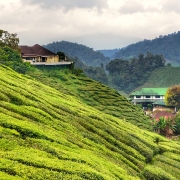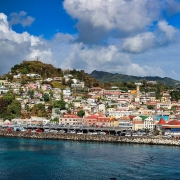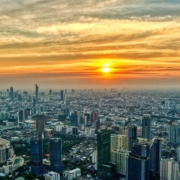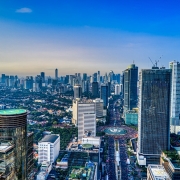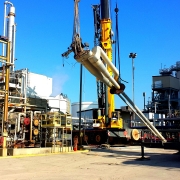What were the organisations formed before ASEAN?
Topic of Study [For H2 History Students]:
Paper 2: Regional Conflicts and Co-operation
Source Based Case Study
Theme III Chapter 1: Reasons for the formation of ASEAN
Topic of Study [For H1 History Students]:
Essay Questions
Theme II Chapter 2: The Cold War and Southeast Asia (1945-1991): ASEAN and the Cold War (ASEAN’s responses to Cold War bipolarity)
The Prelude to ASEAN
In this article, we will examine the creation of three specific regional organisations before the creation of ASEAN: SEATO, ASA and Maphilindo.
1a. Southeast Asian Treaty Organisation (SEATO) (Sept 1954)
In September 1954, the SEATO was created as an anti-communist organisation to prevent further ideological expansion within the Southeast Asian region.
USA was the main advocate of the SEATO due to its belief that Southeast Asian was a critical pivot point for their ideological struggle against communism.
The US-led SEATO comprised of France, Great Britain, New Zealand, Australia, Pakistan, the Philippines and Thailand.
Ironically (or not), only two Southeast Asian countries joined the SEATO. The Philippines shared close political ties with USA, thus the government was supportive of this development. Furthermore, there were communist elements (e.g. Hukbalahap) within the Philippines that could cause political instability. As for Thailand, its government joined SEATO due to the perceived Chinese communist expansion in South China.
In contrast, other Southeast Asian nations had diverging perceptions over the threat of Communism, thus explaining their reluctance to admit the SEATO. For instance, both Indonesia and Burma maintained their neutral position (recall: there were countries that were part of the “non-aligned movement“).
1b. Failures of SEATO: Absence of Commitment
Although the SEATO headquarters was established in Bangkok, Thailand, it did not possess a standing military force unlike the North Atlantic Treaty Organisation (NATO). At best, joint military exercises were conducted annually.
Additionally, the SEATO defense treaty was limited to consultation due to the push for decolonisation [emphasis on self-determination]. This means that member states had to manage internal security threats on their own.
During the Vietnam War, Pakistan and France disagreed with American military involvement. In 1973, Pakistan exited from SEATO due to the organisation’s inaction during the Indo-Pakistani War (1971). More importantly, after the Americans withdrew from Indochina following the end of the Vietnam War, SEATO was no longer functional. It was disbanded on 30 June 1977.
2a. Association of Southeast Asia (ASA) (July 1961)
In January 1959, Tunku Abdul Rahman visited the Philippines. He proposed to the Philippine President Carlos P. Garcia to form the ASA. The Tunku wrote to other regional government leaders in Burma, Thailand, Indonesia, Laos, Cambodia and Vietnam, seeking their feedback on this organisation.
By January 1960, only Thailand and the Philippines agreed to form the ASA. On 31 July 1961, the ASA was officially formed in Bangkok, Thailand. The main function of ASA was to promote regional cooperation.
2b. Breakdown of the ASA
However, the ASA broke down in 1963 due to conflicting views by member states as well as Indonesia. When the Tunku put forward the idea of creating the Federation of Malaysia, Philippines and Indonesia strongly objected to the notion.
For Philippines, the contentious issue lie with the possibility that Sabah joined the Federation. This gave rise to the territorial dispute between Malaysia and Philippines, known as the Sabah dispute.
For Indonesia, it was largely due to Sukarno’s fear of “Neo-Imperialism”. His anti-West political views explained his hostile Confrontation (Konfrontasi) policy which lasted from 1963 to 1966.
3a. Maphilindo (July 1963)
Philippine leader, Dr. Jose Rizal, envisioned a Greater Malayan Confederation that united the Malay peoples after the end of colonial rule. On 31 July 1963, the Philippines proposed a tripartite arrangement that involved Malaya, Philippines and Indonesia (i.e. Ma-Phil-Indo).
President Macapagal led the summit in which the three nations signed agreements to affirm their commitment to resolve disputes and conflicts pertaining to the former British-led Borneo Territories.
3b. Collapse of the Maphilindo
Although the regional arrangement was perceived as a genuine desire for diplomacy, the underlying motivation that the Philippines and Indonesia had was to prevent the Tunku from establishing the Federation of Malaysia.
Eventually, the Maphilindo broke down when Sukarno launched the Confrontation to protest against the Federation.
Concluding Remarks
In view of these setbacks, ASEAN was created to overcome such differences. Member nations were encouraged to raise their concerns openly so that other members can respect their differences and find a common solution. Also, a regional organisation that comprised of member states in the region was a more reliable entity that SEATO, given the proximity of countries to potential challenges.
What can we learn from this article?
Consider the following question:
– How far do you agree that political differences were the main reason for the breakdown of ASA? [to be discussed in class]
Join our JC History Tuition and find out how we conduct topical enrichment classes to broaden your knowledge of ASEAN and other A Level History topics. We provide summary notes, timelines and additional practices as well.
The H2 and H1 History Tuition feature online discussion and writing practices to enhance your knowledge application skills. Get useful study notes and clarify your doubts on the subject with the tutor. You can also follow our Telegram Channel to get useful updates.
We have other JC tuition classes, such as JC Math Tuition and JC Chemistry Tuition. For Secondary Tuition, we provide Secondary English Tuition, Secondary Math tuition, Secondary Chemistry Tuition, Social Studies Tuition, Geography, History Tuition and Secondary Economics Tuition. For Primary Tuition, we have Primary English, Math and Science Tuition. Call 9658 5789 to find out more.


